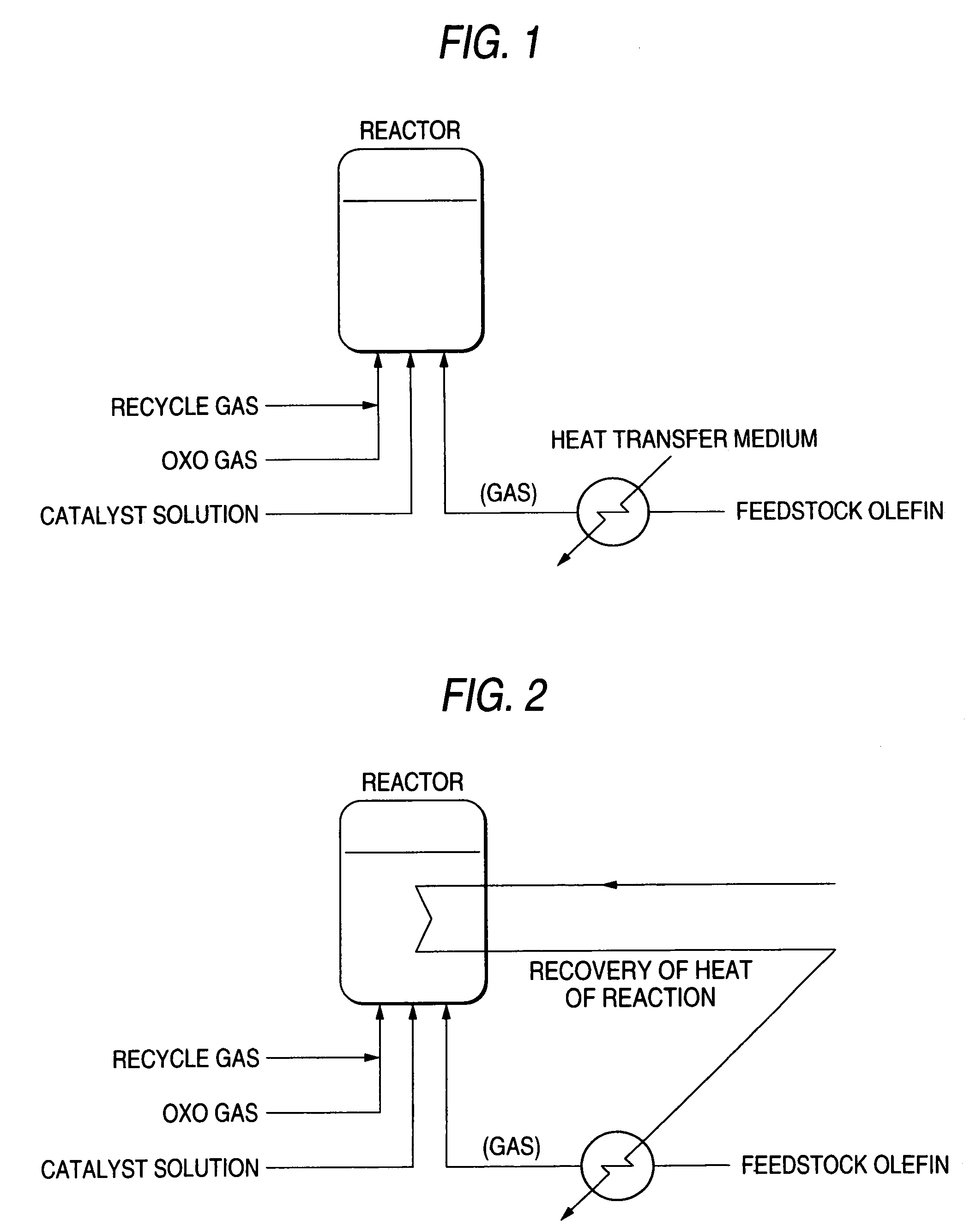Process for producing aldehyde
a technology of aldehyde and aldehyde, which is applied in the preparation of carbonyl compounds, organic chemistry, chemistry apparatus and processes, etc., can solve the problems of unstable behavior, local reaction, and increase in olefin temperature, so as to achieve stable reaction temperature
- Summary
- Abstract
- Description
- Claims
- Application Information
AI Technical Summary
Benefits of technology
Problems solved by technology
Method used
Image
Examples
example 1
[0078]Into a 100-L reactor equipped with a stirrer were charged, with nitrogen replacement, 38.8 g of rhodium acetate, 15 kg of triphenylphosphine, and 70 L of toluene. While the contents were being stirred at a stirrer power of 1 kW / m3, the pressure in the reactor was regulated to 1.7 MPaG with an oxo gas (H2 / CO=1.02) and the temperature of the liquid reaction mixture was adjusted to 70° C. with a heat transfer medium, etc. Thereafter, propylene feeding was initiated. First, propylene and the oxo gas were fed in amounts of 3.6 kg / H and an amount corresponding to the reaction, respectively. After the reaction temperature and the liquid level were ascertained to be stable, the feed rate of propylene was stepwise increased by 1 kg / H each time and that of the oxo gas was increased so as to correspond to the reaction. Until the propylene feed rate and the oxo gas feed rate reached the desired values of 7.2 kg / H and 7,700 NL / H, respectively, the feedstocks were stepwise fed to the reacto...
example 2
[0081]Propylene was reacted in the same manner as in Example 1, except that the propylene which had been gasified was caused to join the oxo gas before being fed to the reactor.
[0082]Both the liquid level in the reactor and the reaction temperature were stable.
PUM
| Property | Measurement | Unit |
|---|---|---|
| partial pressure | aaaaa | aaaaa |
| partial pressure | aaaaa | aaaaa |
| reaction temperature | aaaaa | aaaaa |
Abstract
Description
Claims
Application Information
 Login to View More
Login to View More - R&D
- Intellectual Property
- Life Sciences
- Materials
- Tech Scout
- Unparalleled Data Quality
- Higher Quality Content
- 60% Fewer Hallucinations
Browse by: Latest US Patents, China's latest patents, Technical Efficacy Thesaurus, Application Domain, Technology Topic, Popular Technical Reports.
© 2025 PatSnap. All rights reserved.Legal|Privacy policy|Modern Slavery Act Transparency Statement|Sitemap|About US| Contact US: help@patsnap.com



